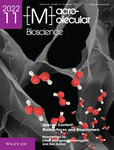Journal list menu
Export Citations
Download PDFs
Cover Picture
Reactive Oxygen Species Suppressive Kraft Lignin-Gelatin Antioxidant Hydrogels for Chronic Wound Repair
- First Published: 14 November 2022
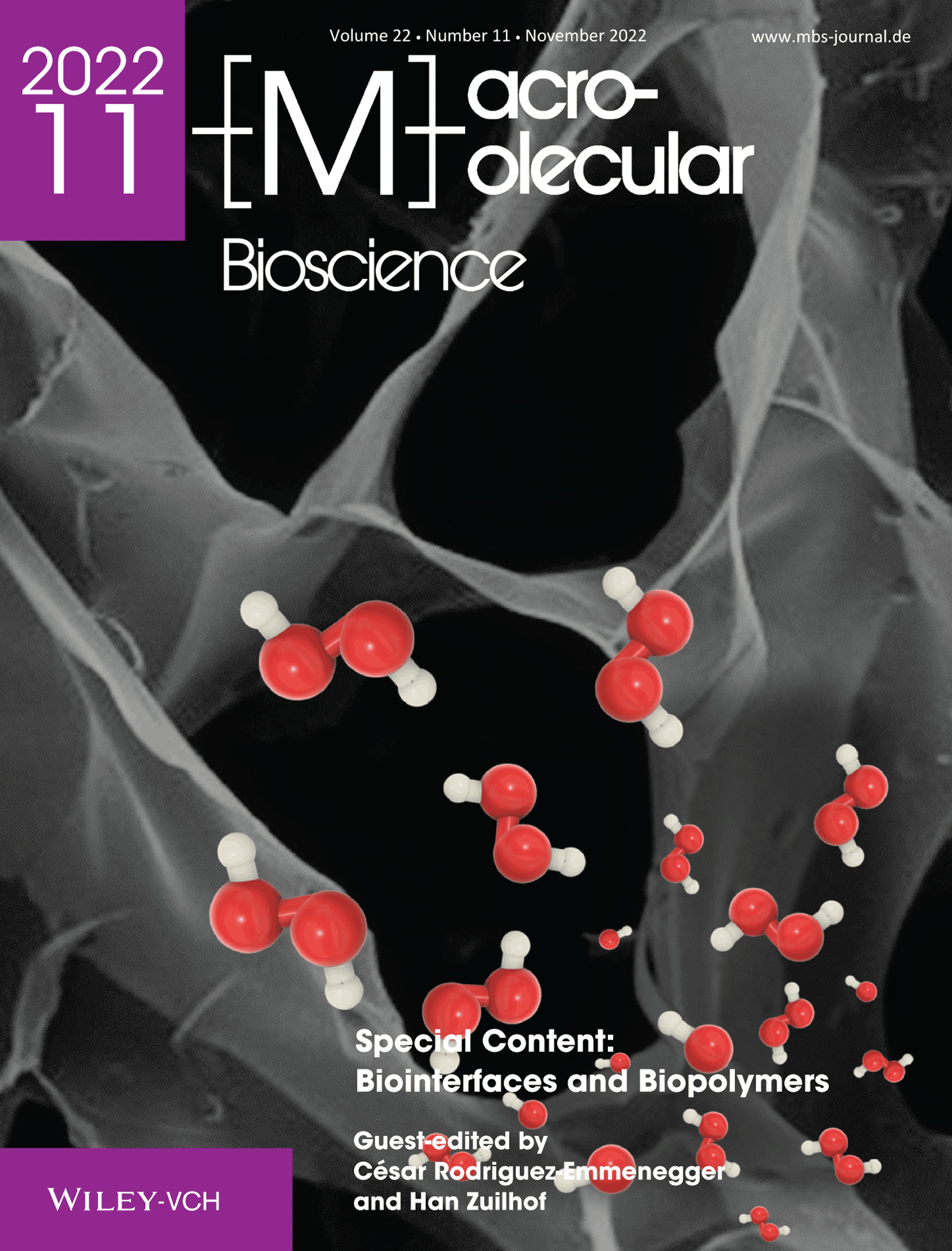
Front Cover: Chronic wound generates high levels of reactive oxygen species (ROS), which inhibits normal wound healing process. In article number 2200234, Justin J. Chung and co-workers fabricate ROS suppressive and antioxidant hydrogel by chemically cross-linking kraft lignin with gelatin. The flexible kraft lignin-gelatin hydrogel is able to suppress ROS, and exhibit antibacterial activity.
Masthead
Research Articles
Reactive Oxygen Species Suppressive Kraft Lignin-Gelatin Antioxidant Hydrogels for Chronic Wound Repair
- First Published: 06 September 2022

Kraft lignin based hydrogels are fabricated to suppress overexpressed reactive oxygen species (ROS) for chronic wound repair. Kraft lignin and gelatin are cross-linked via ring opening reaction to form flexible and antioxidant hydrogels. The hydrogels exhibit high antioxidant ability. Plus, tailorable mechanical properties, pH neutralization ability, and antibacterial activities are confirmed. Kraft lignin-gelatin hydrogels are promising wound dressing biomaterials.
Differential Migration and Proliferation Potential of the Hydrogel Aided 3D Tumoroid
- First Published: 23 August 2022
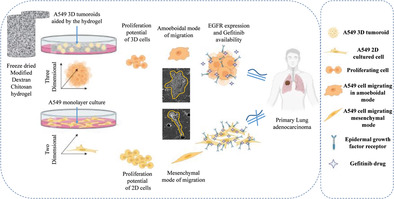
The chemically modified Dextran-Chitosan (MDC) hydrogel aids 3D A549 tumoroid with physiologically relevant proliferative, migratory and invasive, and drug resistance properties than observed in its 2D monolayer culture. Thus, emerging as an in vitro 3D model mimicking primary lung adenocarcinoma with ECM mimicry and similar tumorigenic properties. Emerging as state-of-the-art 3D in vitro model for lung adenocarcinoma study.
3D Bioprinted Hydroxyapatite or Graphene Oxide Containing Nanocellulose-Based Scaffolds for Bone Regeneration
- First Published: 18 August 2022
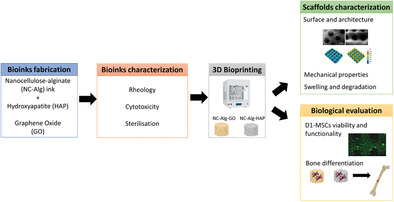
Bioinks based on nanocellulose–alginate–hydroxyapatite (NC–Alg–HAP) and nanocellulose–alginate–graphene oxide (NC–Alg–GO) are developed for 3D bioprinting and bone regeneration. The addition of both HAP and GO to the NC–Alg bioink improves its characteristics in terms of mechanical properties and embedded D1-MSC viability and functionality. Differentiation to bone is promoted on GO scaffolds.
Engineering the Surface Properties of DNA Nanostructures by Tuning the Valency of Assembling Species for Biomedical Applications
- First Published: 19 August 2022

Noncanonical self-assembly of DNA nanostructures with guest molecules is one of the promising strategies to functionalize DNA nanostructures for biomedical applications. Guest molecule polyamines induce DNA conformation slightly shifting from B form to A form, thus alter the surface properties of DNA for enhanced therapeutic applications
Independent Roles of Molecular Mobility and Zeta Potential on Supramolecular Surfaces in the Sequence of RAW264.7 Macrophage Responses
- First Published: 03 September 2022
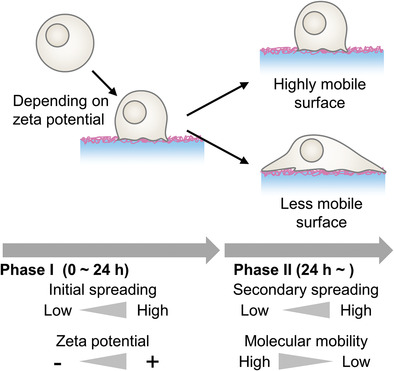
The initial spreading of murine RAW264.7 macrophages is dependent on the zeta potential of the polyrotaxane surface, while the secondary spreading and lipopolysaccharide-stimulated inflammatory responses are determined by the molecular mobility of the surface. The key parameters governing the macrophage response on the polyrotaxane surface are suggested to change depending on the stage of cultivation.
Ultra-High Modulus Hydrogels Mimicking Cartilage of the Human Body
- First Published: 30 August 2022
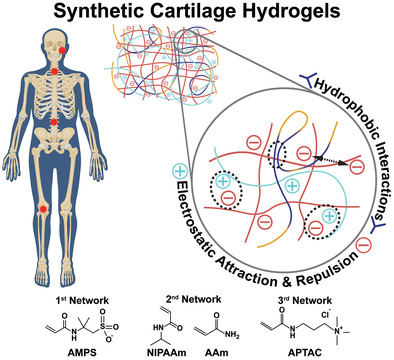
Triple network hydrogels, leveraging electrostatic and hydrophobic interactions, are developed as potential substitutes for various cartilage tissues found in the human body. These hydrogels achieve moduli (i.e., stiffnesses) that parallel several cartilage types, and are also hydrated, strong, and tough. Thus, these hydrogels are promising candidates as cartilage substitutes in numerous applications.
Special Content: Biointerfaces and Biopolymers - Guest-edited by César Rodriguez-Emmenegger and Han Zuilhof
Special Content: Guest Editorial
Special Content: Review
Tailoring Polymer-Based Nanoassemblies for Stimuli-Responsive Theranostic Applications
- First Published: 13 September 2022
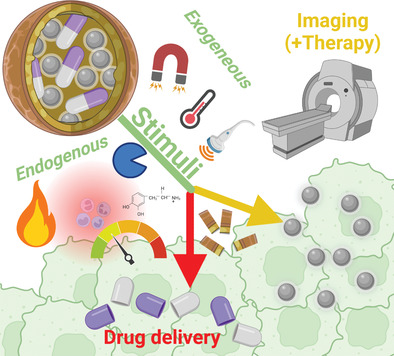
Nanotheranostic polymer self-assemblies are on the rise. The broad chemical variety of polymers and the wide range of possible combinations with inorganic components allow for the development of a plethora of systems, perfectly adjusted to efficiently image, target, and treat a disease, thereby responding to endogenous or exogenous or a combination of multiple stimuli.
Special Content: Research Articles
Synthesis and Linker-Controlled Self-Assembly of Dendritic Amphiphiles with Branched Fluorinated Tails
- First Published: 25 May 2022
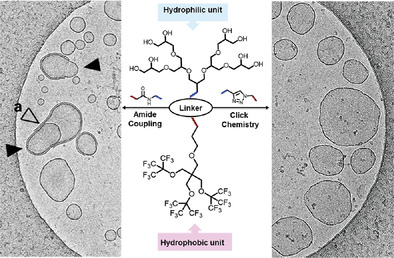
Two new nonionic amphiphiles from a perfluoro-t-butoxy group and a G2 oligoglycerol dendron are synthesized. Both compounds assemble in water to form vesicles with well-defined bilayer membranes. In this process, different linkers enforce a slightly different aggregation behavior. Amide-linked amphiphiles lead to the formation of large multivesicular (MVVs) and multilamellar (MLVs) vesicles as well as smaller unilamellar vesicles (SUVs), while triazolyl-linked amphiphiles cause the exclusive formation of unilamellar vesicles.
Effect of Molecular Weights on Metal-Mediated Grafting of Sulfobetaine Polymers onto Solid Surfaces for Non-Biofouling Applications
- First Published: 04 July 2022
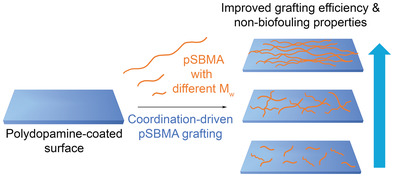
Coordination-driven approach to grafting sulfobetaine polymers on solid surfaces is proposed as an effective way to suppress unwanted biofouling. Solid surfaces are precoated with polydopamine, and sulfobetaine polymers are grafted onto these surfaces via the formation of ZrIV-mediated coordinate bonds. The effect of molecular weight on the grafting efficiency is systematically investigated using various surface characterization techniques.
A Straightforward Approach towards Antibacterial and Anti-Inflammatory Multifunctional Nanofiber Membranes with Sustained Drug Release Profiles
- First Published: 20 July 2022
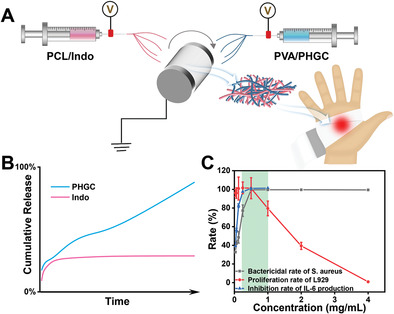
Simplifying the preparation of multifunctional dressings meets industrial and clinical demand. Herein, a straightforward approach is proposed to construct composited nanofiber membrane by bidirectional electrospinning, where hydrophilic and hydrophobic drugs are loaded in hydrophilic and hydrophobic polymers, respectively. The fabricated membrane exhibits considerable sustained-release, antibacterial, and anti-inflammatory performance. This method applies to other drugs theoretically, and demonstrates potential for industrialization.
The Relation Between Protein Adsorption and Hemocompatibility of Antifouling Polymer Brushes
- First Published: 02 August 2022

The hemocompatibility of various types of state-of-the-art antifouling polymer brushes is studied and related to their outstanding resistance to non-specific protein adsorption. Mass-spectrometric analysis of the composition of fouling deposits reveals the importance of the identity of adsorbed proteins rather than the total adsorbed amount. Surprisingly, full prevention of protein fouling is not required to achieve optimal hemocompatibility.
Self-Assembly Anchored Cationic Copolymer Interfaces for Applying the Control of Counterion-Induced Bacteria Killing/Release Procedure
- First Published: 25 July 2022
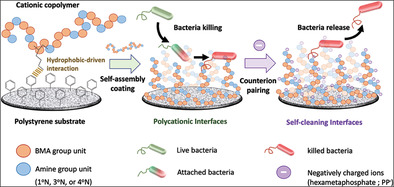
This study focuses on the construction of new polycationic materials, which can provide a cyclic operation process for the killing and releasing of bacteria, and perform repeated regeneration, which is of great significance for the development of advanced medical biomaterials. The results perform a self-assembled cationic copolymer interface for controlling the counterion-induced bacterial killing/release process.
Curcumin-Based Universal Grafting of Poly(OEGMA) Brushes and Their Antibacterial Applications
- First Published: 08 September 2022
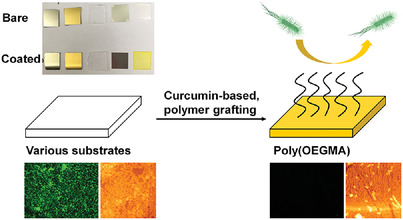
The curcumin-based universal surface modification method is developed to graft polymer brushes from various substrates. Curcumin coating can serve as a reactive layer to immobilize an initiator, followed by the polymer grafting. The current approach can be employed as a versatile tool to achieve antibacterial properties, showing up to 99.4% reduction in bacterial adhesion, compared to that of the controls.
Effect of Poly(Oxanorbonene)- and Poly(Methacrylate)-Based Polyzwitterionic Surface Coatings on Cell Adhesion and Gene Expression of Human Keratinocytes
- First Published: 06 October 2022
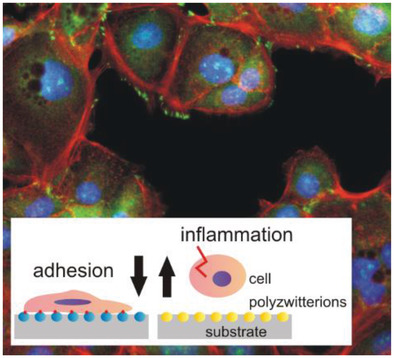
Human kerationcytes (HaCaT) cannot form focal adhesions on many highly hydrated polyzwitterionic surface coatings. Gene expression analysis indicates that HaCaT cells cultivated in the presence of poly(zwitterions) on which they cannot adhere have up-regulated inflammatory and apoptosis-related cell signaling pathways.
Influence of Sharklet-Inspired Micropatterned Polymers on Spatio-Temporal Variations of Marine Biofouling
- First Published: 25 September 2022

This paper investigates the influence of bioinspired micropatterned polymers on the settlement of marine microfouling and macrofouling. Sharklet-based micropatterns are replicated on polymers with various chemical and mechanical properties. The micropatterned substrates are immersed at two contrasting sites and in two different seasons. The main question is what parameters significantly affect the density and diversity of microfouling and macrofouling.




